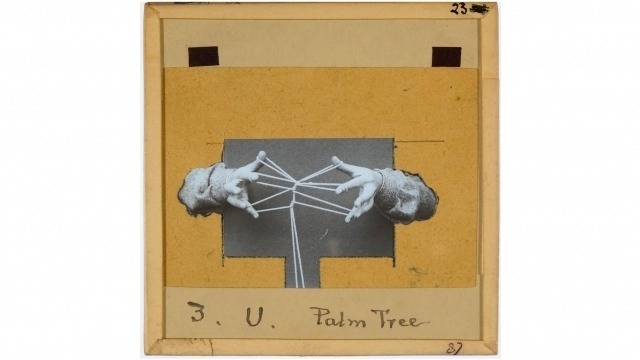Making and Record: The art of string figures
Date & time
Location
Speakers
Contacts
SHARE

About the Event
The ANU Australian Studies Institute is pleased to host the return lecture by the inaugural Australian National Fellow to the Menzies Australia Institute at King's College London, Dr Robyn McKenzie.
-
5.00-6.00: Opening Reception / Canapes & Drinks
Level 3, Sir Roland Wilson Building (120), McCoy Circuit -
6.00-7.30: Public Lecture by Dr Robyn McKenzie
Theatrette (2.02), Level 2, Sir Roland Wilson Building (120), McCoy Circuit
About the Lecture
String figures (also known as Cat’s Cradles) are patterns or designs made on the hands with a loop of string. In the late nineteenth and early twentieth century anthropologists collected string figure repertoire from Indigenous people in various parts of the world.
This activity was promoted by A.C. Haddon who first collected eight mounted figures when he was in the Torres Strait in 1888-89, that were deposited in the collection of the British Museum in London. When he returned on the Cambridge Anthropological Expedition to the Torres Strait in 1898, he and his colleague W.H.R. Rivers devised a descriptive language for recording methods of construction. After publication of their ‘method’ a knowledge of a few types and ability to record others became part of the anthropologist’s tool kit equipping them for the field.
In this lecture, I look at the visual products of this collecting history. Researchers in the field from Baldwin Spencer in the Gulf of Carpentaria to Bernard Deacon on Ambrym in Vanuatu drew the figures in their notebooks and journals. There were lots of photographs taken in the field and some film. Back at home illustrations to accompany publication of results gave rise to more genres of image-making including the ‘strange’ results of recreations of figures photographed in the studio. Rivers and Haddon’s systematic language later inspired forms of coded script.
In the study of string figures there was a constant movement back and forth between making and record. In order to record the method of construction ideally the researcher would learn how to make the figure themselves, prefiguring the somatic turn in participant-observation fieldwork of late last century. In conclusion, I look at how through the process of making, researchers accessed an understanding of the art of string figures as a compendium of culturally differentiated movement styles.
About the Speaker
Dr. Robyn McKenzie is a Research Fellow in the School of Archaeology and Anthropology at the Australian National University in Canberra. She initially trained in Art History at the University of Melbourne. She has published extensively on contemporary Australian art. She was art critic on The Age newspaper in Melbourne for a number of years in the mid-1990s and from 1996–2002, was editor of LIKE, Art Magazine. Her PhD, completed in 2016, looked at a collection of mounted string figures made in Yirrkala in north-east Arnhem Land in 1948, that is in the Australian Museum, Sydney. As the inaugural Australian National Fellow, Robyn has just returned from three months at the Menzies Australia Institute, King’s College, London.








